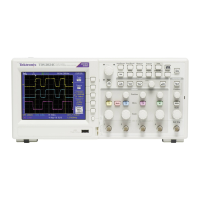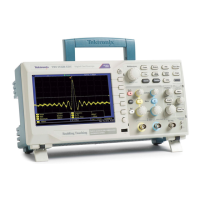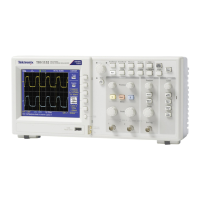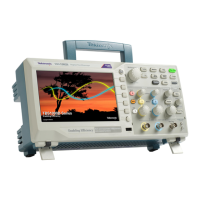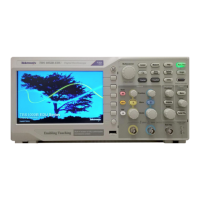Sampling oscilloscope concepts
Sampling and acquisition concepts
Before the oscilloscope can display or measure a signal, it must be sampled.
Sampling is the process of measuring the input signal amplitude value at regular
intervals (called the sampling rate, in samples per second), converting the
sampled levels into digital data, and storing the sampled values in memory to
create a waveform record. The oscilloscope uses the digitized values in the
waveform record to create, display, and measure waveforms. Each oscilloscope
channel has its own waveform record memory storage.
TBS1000C Series oscilloscopes use real-time sampling. In real-time sampling,
the oscilloscope samples and digitizes all of the sampled points at one time, in
sequence, stores the sampled data in memory, and then repeats the sampling and
storage process.
Use the Horizontal Scale knob to change the sample rate (samples per second).
The oscilloscope automatically sets the sample rate so that there are more than
enough samples to accurately capture the signal information. The sample rate is
shown on the screen at all times in the horizontal position/scale readout.
NOTE.
■
The maximum sample rate of 1 GS/s is available on both channels, when both
channels are active.
You can set the waveform record length (number of sample points in the
waveform record) from 1000 points to 20k points. A longer (larger) waveform
record is useful to capture several waveform cycles to search for a waveform of
interest, or to capture a great deal of detail for just a few waveform cycles and
then use the Zoom function to search the waveform for areas of interest.
Each time the oscilloscope fills the waveform record is called a waveform
acquisition, or acquisition for short. Each acquisition stores new sample data
into the same waveform record for that channel.
TBS1000C Series Oscilloscopes User Manual 35
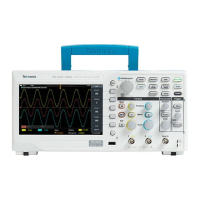
